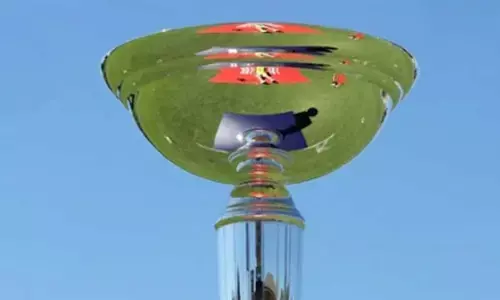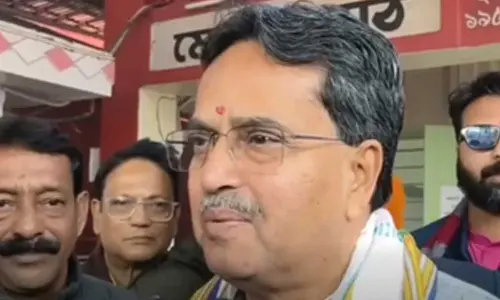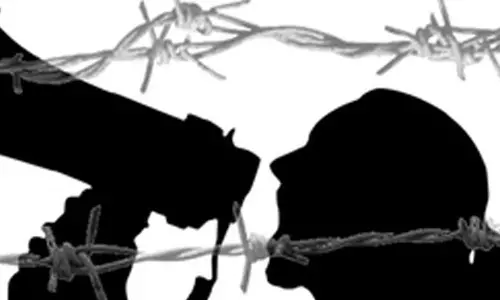Mangalore's Unique Dasara Celebrations in Contrast to Mysore

Earns it the common man’s Dasara title.
Mangaluru: Mangaluru, a coastal city in Karnataka, boasts a distinctive version of the Dasara festival, and it remarkably draws crowds equivalent to its famed counterpart in Mysuru. What sets Mangalore's Dasara apart is its self-sustaining nature, with no government funding or royal patronage. Instead, it relies on the devotion and generosity of its residents.
The centrepiece of Mangalore's Dasara celebrations is the Kudroli Gokarnanatha Temple, which takes the lead in organizing the Dasara procession, installing Navadurga idols, and infusing the festivities with color and joy. This temple, steeped in history, was a dream realized by Sahukar Koragappa in 1912. He played a pivotal role in bringing the renowned 19th-century philosopher and social reformer, Narayana Guru, from Kerala to consecrate a Shiva Lingam that he had brought along with him. Narayana Guru named the temple 'Gokarnanatha.' This noble endeavor was driven by Koragappa's concern over the denial of temple entry rights to the Billava community by upper-caste Hindus. He envisioned a place of worship where his community could find solace.
From its humble beginnings, the Gokarnanatha Temple has evolved into a global center for the Billava community and a significant Shiva temple, not only in Dakshina Kannada but throughout South India. The temple's transformation was spearheaded by Rajya Sabha member B. Janardhana Poojary, who initiated the process of elevating the temple's status through Kar Seva in 1989, with the temple's inauguration graced by former Prime Minister Rajiv Gandhi.
All Navadurgas in their legendary form:
One of the unique features of the Kudroli Temple is the tradition of consecrating the Navadurgas for the Dasara festival, which began in 1991. These Navadurgas represent various avatars mentioned in the Puranas, making this temple a distinctive hub for Navadurga worship. The nine forms of Durga - Mahagowri, Mahakali, Kathyayini, Shailaputhri, Brahmacharini, Chandraghanta, Kooshmandini, Skandamatha, and Siddhi Dhatri - are all worshipped here, with Sharada, the goddess of knowledge, occupying a central position.
During the last three days of the Navarathri, the Sharada Mahotsava adds an extra layer of vibrancy to the Navadurga poojas. The Sharada matha idol is said to be one of the largest in the country.
Vijayadashami, the grand finale of the Navarathri, is marked by an extravagant procession covering a distance of five kilometers. More than 75 colorful tableaux from all over the state, along with over 30 troupes of folk dancers hailing from Karnataka, Maharashtra, Kerala, and Andhra Pradesh, participate in the procession. All nine Navadurga idols, mounted on truck platforms adorned with dazzling lights, are prominently featured.
The Mangalore Dasara is estimated to draw over 1 million people to witness the procession in 2023, with an additional half-million visiting the temple during the Navarathri festivities. This crowd is equivalent to the renowned Mysore Dasara, but what makes Mangalore's celebration distinct is its self-reliance. Unlike Mysore, it does not have government patronage or royal halo. Instead, the entire expenses are shouldered by devoted residents and philanthropists, earning it the title of the "common man's Dasara."
Cosmopolitan too!
The coastal city’s true colours of bonhomie and camaraderie is best presented during the Dasara. The burgeoning industrial and maritime city is truly cosmopolitan in many ways. During the last ten days of Dasara the city has seen Bengali, Gujarati, Rajasthani, Oriya and Mysurian glimpses of Dasara. City’s mainline Dasara celebrations at Kudroli Gokarnanatha temple and the city’s official Dasara procession however was the main event.
With the growing influx of industrial and maritime experts migrating to Mangaluru on official postings their families hold Dasara in the hues of their respective over 2000 of them are from Odisha, West Bengal (Mainly Kolkata), Rajasthan, Gujarat and Maharashtra. While people from Odisha, West Bengal come together to hold Durga pooja in New Mangalore Port and in Hindi Prachar Sabha, the Gujaratis celebrate it in the form of Garba.
Ladies in the Bengali association told “We Bengalis celebrate Durga Pooja in a grand manner, this is the only festival we really indulge. On the Vijayadashami day we hold ‘Bidai’ of Durga matha who will take a journey back to her husband’s house in Kailas, for the nine days she stays with her family of Saraswathi, Lakshmi and Ganesh. For ladies the ‘Bidai’ is a very emotional event and we exchange Sindhoor tilaks and also put it on the Durga Matha’s idol.
Elders in the Oriya community say though the Bengali and Oriya Durga Pooja are more or less same on the religious side, Oriya people have their own cuisine, dance forms and cultural programmes to celebrate Durga Pooja. Mangaluru city has been a gracious host for us Oriya people, we find Mangaluru has the right mix of qualities for make a mini India, many local people also visited our Durga Pooja Pendal in Panambur.
Both Gujrati and Rajasthani people also hold Garba dance in their association hall in the city and exchange sweets and wishes. Kanhayalal of Rajasthani association told that Mangaluru is a home away from home for the Rajasthani people settled in the city.

















